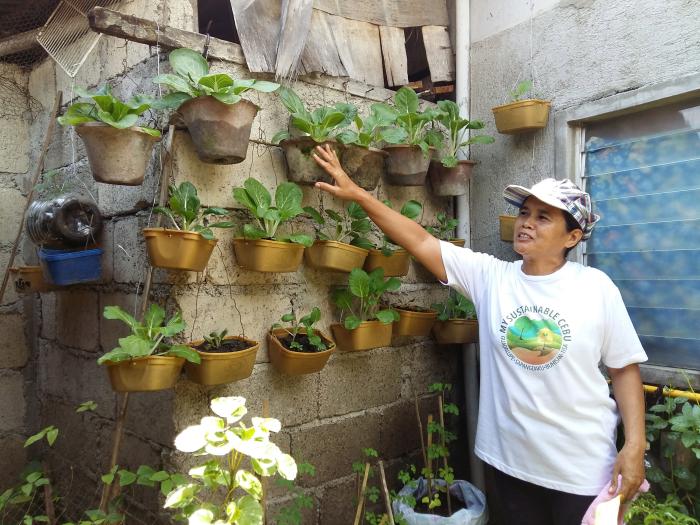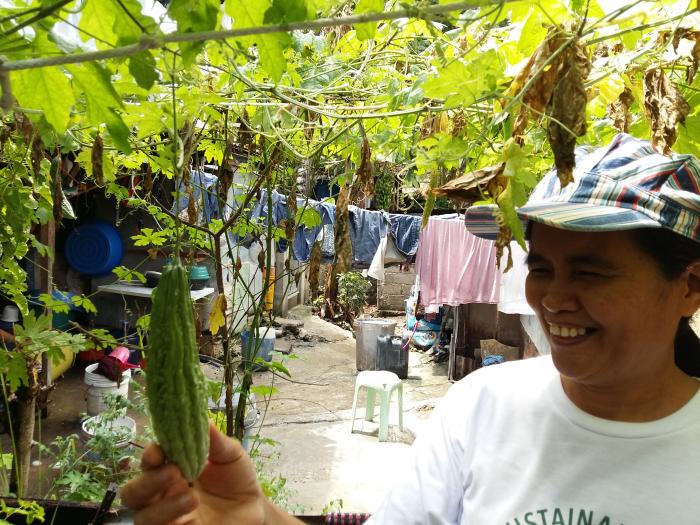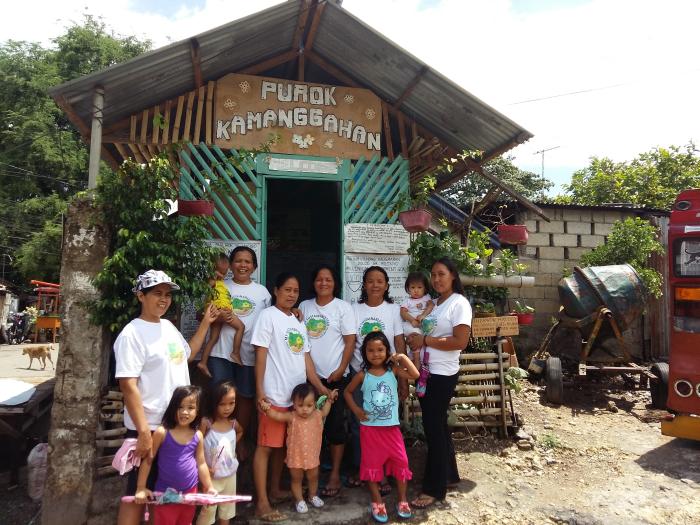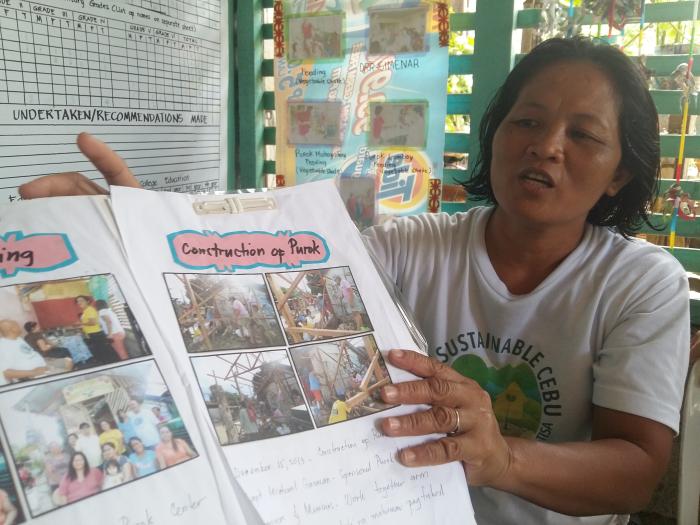‘Purok’ housewives keep village green in Guadalupe

Dolia Caburnay, purok’s assistant treasurer shows pechay and other vegetables grown in hanging pots of a vertical garden in barangay Guadalupe, Cebu City. The greens are mixed with crushed ice and banana into a tasty shakes for a feeding program for neighborhood kids. (CDN PHOTO/ MARIAN Z. CODILLA)
They clean and segregate their neighbors’ garbage and plant vegetables in open spaces.
Outside their wooden shanties, housewives keep gardens of ampalaya, spinach, pepper, malunggay, eggplant and cabbage.
With a broom and sack in hand, the women go out to the corners of sitio Kamanggahan in barangay Guadalupe, Cebu City. Sometimes, their children and grandchildren tag along.
The aim is zero-malnutrition and an earth-friendly village for Purok Kamanggahan, as they call their group.
“All of us volunteer to clean our surroundings. It is such a good feeling to see improvements in our community since we started this two years ago,”said purok president Avelina Caballes in Cebuano.
“Until now some people laugh at us for going out of our way to do what is best for the community. But this is better than sitting around doing nothing.”
Out of 110 households in sitio Kamanggahan, 23 belong to the purok system.
A “purok” or cluster of households in a barangay is the model used by the award-winning municipality of San Francisco in Camotes Island in triggering community action.
In Kamanggahan, they have a regular feeding program and teach disaster resilience, while earning from garbage collected and the vegetable harvest.
A member makes a one-time contribution of P100. Funds are rolled into the group’s livelihood program – a credit service for members and meat selling.
Every week, households mount a feeding program.
“We use our planted vegetables to feed children in our sitio,” said Caballes.
They mix malunggay, spinach (alugbati) and bananas with crushed ice to make a tasty, nutritious shake.
The goal is to ensure that by 2016, no children in the sitio is underweight or malnourished, said Caballes.
Vegetables are planted in small plots, used softdrink bottles and cans, or walls.
For those with tight space, the plants are lined up on the wall in a vertical garden.
“While we sit and talk, we plant at the same time. It’s fun. We harvest what we plant. We hope that this will be replicated in our neighboring sitio and other areas,” said Zenaida Villar, the group’s secretary.

The neighborhood grow ampalaya in their backyard. (CDN PHOTO/ MARIAN Z. CODILLA)
In barangay Guadalupe seven out of 80 sitios have adopted the purok system – Kamanggahan, Dakit, Lumboy, Kabulakan, Banika, and San Isidro.
Before this happened, representatives of each purok were brought by the barangay with the help of Genvi Development Corp. to San Francisco, Camotes, where they were inspired by the purok system of former mayor Al Arquillano.
Purok Kamanggahan received the My Sustainable Cebu award in 2014 and won used a P20,000 cash prize for their livelihood program.

The officials and a few active members of Purok Kamanggahan pose outside their purok house. (CDN PHOTO/ MARIAN Z. CODILLA)
In a small ‘purok house’, they hold monthly meetings and feeding programs.
A trellis of alugbati forms a natural curtain cooling the house. Inside, reycled materials form hanging flowers.
Purok policies and guidelines appear in cartolina sheets tacked on the walls with photos of activities of the past years.

Purok president shows how they constructed their purok house. (CDN PHOTO/ MARIAN Z. CODILLA)
“If only all sitios in the barangay and other barangays in the city would establish the purok system, each community would be progressive,” said Guadalupe barangay captain Michael Gacasan.
Ever since the purok got into action, the once-flood-prone sitio has not suffered going underwater during a heavy rain.
Disclaimer: The comments uploaded on this site do not necessarily represent or reflect the views of management and owner of Cebudailynews. We reserve the right to exclude comments that we deem to be inconsistent with our editorial standards.
